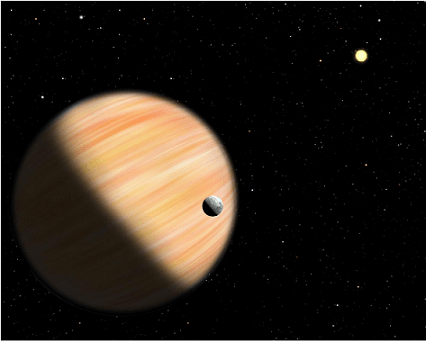Spitzer And Warsaw Telescopes Discover New Planet 13,000 Light-Years Away
Poland-based OGLE’s (Optical Gravitational Lensing Experiment) Warsaw Telescope is placed at the Las Campanas Observatory in Chile. The 1.3 m earthbound Telescope examines the space for finding undiscovered planets of the Milky Way galaxy by using a technique called ‘microlensing’. It is an event that occurs when a star crosses another star. And, the star's gravity works like a lens that magnifies and brightens the faraway star's light. If the foreground star is orbiting a planet then during this event the planet may create a blip in the magnification. Microlensing method is able to spot planets but it cannot determine their location. In order to find out their precise position, the Warsaw Telescope is working in tandem with NASA's Spitzer Space Telescope. The duo has recently discovered a remote gas planet residing about 13,000 light-years away.

According to Jennifer Yee from Harvard-Smithsonian Center for Astrophysics (CfA), Spitzer is the first space telescope that made use of microlens parallax measurement for finding a planet. The microlensing events usually last on an average of about 40 days. This duration is not sufficient for the astronomy team after the ground telescopes send alerts about the starting of such events. Moreover, this time the event took place for about 150 days. Spitzer started tracking the planetary event after its start was identified by OGLE. Both the telescopes detected blip in the magnification but Spitzer saw it occur 20 days earlier. The time delay between OGLE's and Spitzer's viewing was useful not only in calculating the distance to the star and its planet but also for determining the planet’s mass that is about half of Jupiter.
This discovery shows that Spitzer has the ability to help solve the question of how planets are distributed all over the flat, spiral-shaped galaxy. In the central bulge of the galaxy, the star crossings are more frequent. Therefore, the astronomers are currently using these blips for finding planets up to 27,000 light-years away in the bulge. Owing to microlensing technique, till date about 30 planets are discovered and the farthest one is approximately 25,000 light-years away. Spitzer will study about 120 additional microlensing events this summer.
Source: #-Link-Snipped-#
According to Jennifer Yee from Harvard-Smithsonian Center for Astrophysics (CfA), Spitzer is the first space telescope that made use of microlens parallax measurement for finding a planet. The microlensing events usually last on an average of about 40 days. This duration is not sufficient for the astronomy team after the ground telescopes send alerts about the starting of such events. Moreover, this time the event took place for about 150 days. Spitzer started tracking the planetary event after its start was identified by OGLE. Both the telescopes detected blip in the magnification but Spitzer saw it occur 20 days earlier. The time delay between OGLE's and Spitzer's viewing was useful not only in calculating the distance to the star and its planet but also for determining the planet’s mass that is about half of Jupiter.
This discovery shows that Spitzer has the ability to help solve the question of how planets are distributed all over the flat, spiral-shaped galaxy. In the central bulge of the galaxy, the star crossings are more frequent. Therefore, the astronomers are currently using these blips for finding planets up to 27,000 light-years away in the bulge. Owing to microlensing technique, till date about 30 planets are discovered and the farthest one is approximately 25,000 light-years away. Spitzer will study about 120 additional microlensing events this summer.
Source: #-Link-Snipped-#
0
